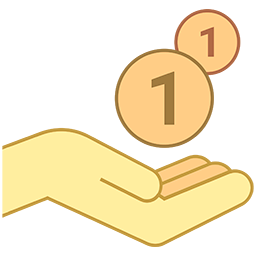Why a cat ...? Answers to the TOP 7 questions about cats
This is an automatic translation.
Click here to read the publication in the original language.
Cats are amazing! Their behavior delights, touches and raises a lot of questions. Answer the most popular of them.
1. Why does the cat trample down?
“Milk step” - this is exactly the name of the characteristic movement of the paws, with which the cat is trampling its owner or some kind of soft thing. This innate movement occurs in kittens while sucking milk. Feeling the warmth and care of the mother cat, they crush her tummy with her paws, thereby stimulating the flow of milk and expressing her pleasure. For many pets, the “milk step” is maintained throughout life and means that at such moments the animal is very pretty.
2. Why do cats have eyes shine?
Tapetum is a reflective layer located behind the cat's eye retina. Externally, it resembles a mother-of-pearl surface and works on the principle of a mirror - it reflects the light coming in at dusk back to the retina, thereby improving twilight vision. It seems to us that in the dark the eyes of the cat are glowing, and in fact it “works” tapetum - it reflects the light so that the animal can see at dusk.
3. Why does a cat run a string and love to play with paper?
The pursuit of prey is the feline's innate instinct. The pet has no opportunity to hunt, therefore with joy it starts to pursue a moving object. And on the contrary, he becomes annoyed when a toy is poked into his face - the prey cannot itself ask into the mouth and must be pursued. A piece of paper just tempting rustling, recalling the rustle of mice in the mink, which also attracts the mustache predator.
4. Why do cats love boxes?
A box for a cat is a cozy and safe place. She is instinctively drawn to a cardboard and paper building, in memory of those times when she was wild, used to shelter and rest a hole, a hollow tree or other secluded places. In them, the animal feels protected from all sides, is not afraid of attack and can use its shelter for ambush and hunting. And the box meets these requirements by 100%.
5. Why does the cat purr?
Purring is an innate ability with which the cat expresses its emotions. A domestic cat may purr in two cases - when it is very good, or when it feels bad. For example, purring during illness helps an animal to calm down, escape from pain and take a nap. But there is no unequivocal opinion about the nature of these sounds. Some researchers believe that purring is the result of the passage of electrical impulses through the central nervous system, which leads to muscle contraction and vibration of the animal's vocal cords. Others claim that the purr is caused by the vibration of the diaphragm and larynx. At the same time, pets purr more than their wild or stray relatives, thereby stimulating their own blood circulation in conditions of a lack of movement.
6. Why does a cat lick wool?
Feline - born hunters. By licking their own wool, they get rid of extraneous odors that can frighten off potential prey. The ritual is especially diligently carried out after eating and caressing the host, which leaves its smells on cats' fur. In addition, licking wool helps to maintain the neatness and beauty of the coat during shedding .
7. Why does the cat fit, turn back and pull its tail?
The "mimicry" of the feline tail is very diverse. In this case, we are talking about unconditional trust, and not about the desire to "mark" the territory, as it may seem at first glance. Turning its backside to the man, the animal inserts its tail and sacrum - one of the most vulnerable parts of the body. Thus, the pet reports that it does not feel fear, is completely relaxed and trusts its owner.
-------------------------------------------------- -------------------------------------------------- -------------------------------------------------- ---------
Any more questions? Ask them in the comments to this article and get an answer. This will help to better understand your pet and find common ground with him.
This is an automatic translation.
Click here to read the publication in the original language.


 Advertising on our project is a great way to promote your products or events!
Advertising on our project is a great way to promote your products or events! 

































